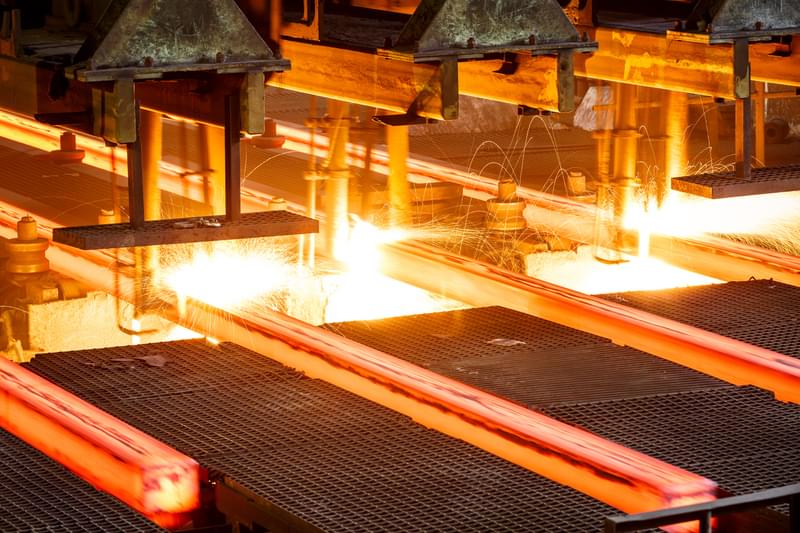Bonds & Loans: The metals sector globally has been booming in recent weeks, with producers and exporters from Russia to the GCC to Latin America hitting the international markets with either refinancing or new issues. What is driving the deal flow on this market at the moment?
Alberto Ono: Most companies in this industry are looking at the opportunity to issue now: it is a very favourable environment in terms of global economic dynamics, with low costs and ample liquidity in the market. Brazilian issuers are largely focussing on liability management operations; the likes of Petrobras, Vale, and Suzano, among others, are all coming to market, combined with some tender offers and bond buybacks. Some are replacing loans with fixed-income products.
Alberto Ono: One of the things that makes this transaction so significant is that it followed a decade-long absence from the international market. What were the company’s objectives and how were they met?
Alberto Ono: In our case, it was also a liability management exercise, and all the proceeds went to prepay our creditors. In 2016 we renegotiated our debt – at that time it was a 10-year amortization schedule; and this time around, we were again able to extend our maturities further.
Back in 2016 we were not in good shape and had to renegotiate; we had a debt with duration of 28 months that we extended to a duration of 63 months. The new agreement also came with some new financial and non-financial covenants, but we had to comply.
Over the next two years, as the company recovered, we decided that it was time to go back to those creditors and discuss ways to improve terms by removing some of the covenants, while extending the duration.
By the end of 2018, as figures continued to improve, we started assessing the market conditions for a potential issuance. In July we found the window, as rates were climbing down in US and Brazil, and liquidity returned to the bond markets, we issued the new notes.
| Deal at a glance | |
|---|---|
| Deal type: | Eurobond |
| Deal structure: | RegS/144a |
| Issuer: | Usiminas International S.à r.l. |
| Deal Size: | USD750mn |
| Issue Date: | July 2026 |
| Tenor: | 7-year |
| Coupon: | 5.875% |
| Price: | 98.594% |
| Yield: | 6.125% |
| Issuer Rating: | Ba3/A2 |
| Governing Law: | State of New York |
| Location: | Luxembourg |
| Listing: | Luxembourg SE |
| MLAs/ Bookrunners: | Goldman Sachs, BB Securities, Banco Bradesco, Itau Unibanco Holdings |
| Legal Adviser to Bookrunners: | Shearman & Sterling |
| Legal Adviser to Issuer: | Skadden, Arps, Slate, Meagher & Flom |
| Use of Proceeds: | Debt Prepayment |
Bonds & Loans: How does the size and tenor of the deal factor into Usiminas’s existing debt profile, and into broader market trends?
Alberto Ono: Seven years was an adequate length from our perspective, even though we could have aimed for a longer tenor. We also thought it was in the range we want to go in terms of benchmark size; initially we planned USD500mn, but upon seeing the demand we upsized to USD750mn. Due to the FX composition of our debt, we decided not to go much higher – even as an exporter, we also have a good part of revenues in BRL, and wouldn’t want to increase debt exposure to the USD any further.
Bonds & Loans: Did you consider any other structures, or perhaps the local bond or even loan market when you were planning the issuance?
Alberto Ono: We had our sights set on the international bond markets from the start, and the decision was made on the back of discussions with our creditors. The size we had in mind would have been very challenging for the local markets, which were just not deep enough for a USD750mn equivalent transaction at that time.
A few months on, and a Fed cut out of the way, the conditions on the local markets are looking more appealing, there is more liquidity available. Many firms are issuing on the domestic market now, but at the time, considering the size of our company the size of the planned issuance, international markets were the optimal option.
Going forward, though, we would definitely evaluate opportunities to tap the domestic markets, particularly as rates are still on the downward trajectory. Last year, we couldn’t even imagine issuing at the terms that we did – not just in terms of size and tenor, but also the price range. Maturities over 5 years – something that 12-18 months ago was very difficult to secure – are today on the short end of the options on offer. In power sector project financings, we are seeing tenors of 15-20 years, so clearly that’s where the market is at now.
Even though Brazil’s economy is not quite booming, the financial conditions in this low interest rate environment are comfortable. So, if that window stays open, of course we will look more closely at the local market options.
Bonds & Loans: Can you talk us through the pricing process? How did it compare with your expectations?
Alberto Ono: Looking at pricing, the yield was 6.125%, with the coupon set 5.875%. It is now trading at just above 5%, so clearly it has performed well. The week we came to market offered a great window: five or six of our peers had tapped the market in that window, and we were concerned that another issuer with similar credit could soak up some of demand for our notes, but that worry didn’t materialize. There were two Argentinian companies, some Mexican issuers, but no one from the metals sector in the region. So, the timing and the execution was pretty much perfect.
Bonds & Loans: What kind of funding-related opportunities or objectives are you looking to explore during this window?
Alberto Ono: Diversification is important, but came about somewhat naturally as a result of the process we needed to go through. The last international bond from Usiminas was issued back in 2008. Of course, we did a roadshow in the US and Europe to familiarize investors with ourselves, but they still had a lot of questions about the company’s background and prospects. After a 10-years hiatus, the company name became less prominent in investors’ minds, so we took our time to comment on the company’s performance, our history and its recovery story since 2016, which impressed them. In the end, when the book opened, we actually had quite a lot of choice as to who ends up in the final allocation – the demand reached nearly 4x oversubscription, roughly USD2.5bn.
Bonds & Loans: Was there anything notable about the deal’s distribution? What were some of the key questions or concerns raised by investors?
Alberto Ono: In terms of allocations, we wanted to ensure that all the investors we have longstanding relationships with could get their share. And if you look at the allocation – 80% real money investors, 55.5% North America, 34% Europe; Asia at 7.6% and the remaining notes going to Latin American accounts, you can see that we achieved the other goal, which is to target portfolio managers and funds from developed economies.
Bonds & Loans: What were the qualities that dictated your selection of the bookrunners on this issuance? And how do you pick your partner banks in general?
Alberto Ono: In syndications, we tend to choose from Brazilian banks who are also creditors of the company, with whom we have a long-time partnership. In case of Goldman Sachs, we believe that it was important to bring them on board, as it was an international operation, and as part of the issuance was targeting US investors. It was necessary to have a sizeable number, but not too many banks, because an excessive number of bookrunners could mean that the syndicate loses focus.
In terms of specific qualities or services that we look for in partner banks, Goldman Sachs is a good example to use here: they showed very impressive dedication and commitment to us as a client, the astute knowledge of the company, of our credit strength and of our objectives. They had a clear vision of what the deal should look like, and that really impressed us.
Bonds & Loans: What are some of the strategic initiatives the company will be focussing on over the next 12 months?
Alberto Ono: Financially, we are in a good position now. We did the liability management for half of our debt and now we are assessing the potential next step for the other half. Even though now we have a comfortable amortisation schedule for years ahead, we sense that there is an opportunity in the current market environment to improve it further. Another point is cost of the debt: rates are coming down further in Brazil, so there is room for us to improve on both the cost and the duration.
Besides that, even though Brazil’s economy is not flourishing at the moment, we believe that if the growth prospects improve somewhat, it will present opportunities to invest more in capex. So we are keeping an eye on growth and demand, in order to explore potential options for the financing part of our investment, maintaining a solid balance of use of proceeds between capex and debt refinancing. We have strong faith in the country’s prospects and growth potential.

Bonds & Loans: Whether trade, FX, commodity prices or other risks that the company is exposed to, what are some of the concerns weighing on your mind?
Alberto Ono: By far the biggest concern is how the ongoing trade standoff between US and China pans out. That is a lingering concern for the whole global market, and Brazil in particular; for us specifically, as a metals exporter, with a slowdown in China the impact on demand for metals would be massive. That is because China is the largest producer and exporter of steel, so any fall in local consumption in China would impact the prices of the commodities worldwide.
Of course, the recent swing in oil prices due to supply side woes, following the attack on Saudi refineries, will inevitably influence the direction of prices on other commodities. That said, there has been a significant shift from times past, when such incidents could cause a global shortage for months; nowadays, when one operation sees a drop in output, other operations around the world, namely US and Canadian shale producers, quickly come on line and ramp up their production. This helps to keep the prices more balanced.
More importantly for us, when the shale producers come back in swathes, this actually increases demand for steel; so even though fuel price is very high and transport costs therefore high as well, you can also see more investment stimulus. Of course, there is a heightened threat of inflation rising, but if there is stimulus for other sectors, steel tends to go up regardless. So it can also be a positive factor, depending on your perspective.
Finally, we are also monitoring the US and ECB interest rate dynamics; this directly impacts the liquidity and flow of money into EM credits like Brazil. In Brazil, Argentina, Central America, some political issues have spilled over into the markets, for example when currency controls blow up the exchange rates. These kind of destabilizing factors need to be closely monitored. But even if we can’t foresee the black swans, we can still position ourselves to be less susceptible to oncoming risks.









